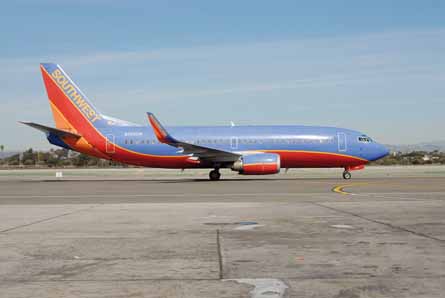The end of the decade is "too long to wait" for an all-new aircraft to replace its ageing 737 Classics, according to Southwest Airlines.
"We've got fleet of 200 airplanes out there. At some point we're going to have to do something with and we can't wait until 2020," said Southwest Airlines vice-president operations co-ordination centre, Jeff Martin about the carrier's block of 122-seat 737-500s and 137-seat 737-300s.
Boeing is likely to indicate more clearly at June's Paris air show of whether it plans to re-engine the 737, for delivery mid-decade, or develop an all-new aircraft to enter into service at the end of the decade.
Martin added that the need to replace its ageing fleet of 737 Classics combined with Boeing's timing for a new narrowbody may be incompatible for Southwest. However, that has not disqualified its long-standing sole-aircraft supplier from the competition.
 |
|---|
The end of the decade is "too long to wait" for an all-new aircraft to replace its ageing 737 Classics, according to Southwest Airlines. |
"We'll give them a shot just like everybody else, [the] main thing is as any partner you have to communicate with them exactly what you want. [I'm] not sure we have, on our side, fully defined that for them," he said. The March 2012 arrival of its first 737-800s will guide its thinking, he said.
Its recently completed acquisition of AirTran will enable it to understand if it can operate multiple types with the introduction of AirTran's Boeing 717s alongside its 737s.
Martin said Southwest's multiple fleet move "perks up everybody's ears", eliminating the sole barrier to entry for manufacturers other than Boeing to sell aircraft to it.
"We're going to manage multiple fleets, but what we're really going to look at is who can bring us 25% efficiency," he said, "We've squeezed the turnip, there's nothing left in the NG. It now goes back to the airframe and the engine. We'll look at re-engining, but we're waiting for someone to tell us what [Boeing is] going to do," said Martin of the incremental improvement it has sought through technology updates to its 737s, including having installed winglets on 80% its 737 fleet.
"Once we get through [the] AirTran [integration] we've got another year's work I think then we'll come up and start looking around and determine what we're going to do," he said. "Right now, it's all hands on deck for the integration, but we know we've got a subfleet of airplanes that we need to address - that's the classics and there's 200 of them."
Martin said the $175 million move to RNP precision navigation and autothrottle controls on its 737s have opened the door to new fleet types as the primary flight display/navigation display arrangement is virtually universal across all manufacturers' avionics.
Source: Flight International












































